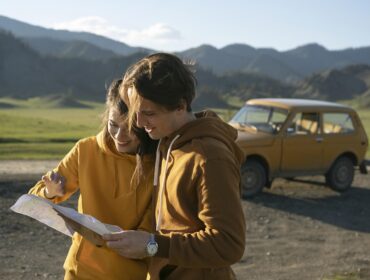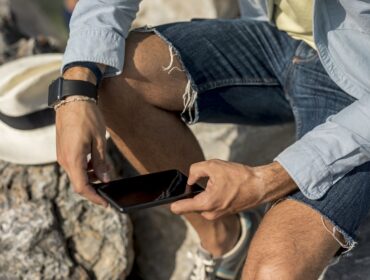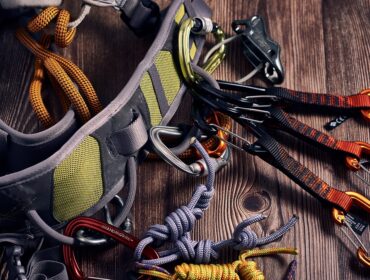In the age of instant sharing and visual storytelling, travel photography has become more than just a way to preserve memories – it’s how we document experiences, share culture, and connect with people worldwide. But one question continues to divide photographers and travelers alike; Phone Camera vs DSLR: What’s Best for Travel Photography?
With smartphones now boasting AI-enhanced photography, large sensors, and multiple lenses, and DSLRs offering unmatched manual control and lens versatility, the answer isn’t as black-and-white as it once was. In 2025, the gap between these two options has narrowed significantly – but each still shines in different ways.
This guide compares phone camera vs DSLR across key categories like image quality, portability, flexibility, cost, and editing to help you choose the right gear for your travel needs.
1. Image Quality
DSLRs: The Classic Powerhouse
DSLRs still hold the crown when it comes to pure image quality. With large sensors (APS-C or full-frame), DSLRs capture more light, better detail, and superior dynamic range – especially in low-light conditions. You can shoot RAW files, change ISO, shutter speed, and aperture manually, and create depth-of-field effects that phone cameras still struggle to replicate naturally.
Phones in 2025: Surprisingly Competitive
Flagship smartphones like the iPhone 15 Pro Max, Google Pixel 9, and Samsung Galaxy S25 Ultra feature multi-lens systems, large 1-inch sensors, and computational photography powered by AI. Night mode, portrait effects, and HDR are now automatic and incredibly advanced. Phones can produce professional-looking shots with just a tap, but DSLR images still maintain more depth and quality when closely examined or printed in large format.
Verdict(Phone Camera vs DSLR): For critical image quality and flexibility, DSLRs win. But for digital sharing and casual prints, phones are more than capable in 2025.
2. Portability and Convenience
Phones: Always in Your Pocket
The biggest advantage of a smartphone is that it’s always with you. Whether you’re hiking, at a crowded market, or taking a spontaneous sunset shot, you can shoot in seconds without unpacking anything. They’re compact, lightweight, and perfect for minimalist travelers or those not looking to lug around camera gear.
DSLRs: Bulky and Noticeable
Even entry-level DSLRs with a kit lens can weigh over 1.5 pounds. Add extra lenses, a tripod, or a battery grip, and you’ve got a full kit that can be cumbersome, especially when navigating airports, trails, or busy urban areas.
Verdict(Phone Camera vs DSLR): Phone cameras win for portability, spontaneity, and simplicity.
3. Control and Versatility
DSLRs: Full Manual Mastery
With a DSLR, you’re in total control. You can choose shutter speed to freeze motion, adjust aperture for background blur, and fine-tune ISO for different lighting conditions. Lens choices – telephoto, wide-angle, macro, prime – expand your creative reach dramatically.
Phones: Smart, But Still Limited
While smartphone apps like Halide and ProShot offer manual settings and RAW shooting, they don’t provide true interchangeable lens capability or optical zoom at the DSLR level. Computational effects try to simulate what real lenses do, but it’s often approximation, not precision.
Verdict(Phone Camera vs DSLR): For artistic control, DSLRs remain the best option for serious photographers.
4. Sharing and Editing on the Go
Phones: Instant Gratification
Snap a photo, edit it in Lightroom Mobile or Snapseed, and upload to Instagram or your travel blog – all from the same device. Phones make real-time storytelling incredibly easy, with cloud backups and auto-syncs to your laptop or drive.
DSLRs: Powerful But Slower
DSLRs require memory cards, card readers, laptops, and editing software like Lightroom or Photoshop. Newer models now offer Bluetooth and Wi-Fi, but transferring images still adds an extra step. For many travelers, this slows down content creation.
Verdict(Phone Camera vs DSLR): For fast sharing and mobile editing, phones are unbeatable.
5. Cost and Maintenance
Phones: One Device, Many Functions
A premium phone in 2025 can cost $1,200-1,500, but it doubles as your navigator, translator, wallet, and entertainment device. There’s no need for extra lenses or accessories for casual users.
DSLRs: Long-Term Investment
A DSLR body starts around $700-900 for entry-level models, with mid-range or full-frame models running $1,500+. Add lenses (which can cost hundreds to thousands), memory cards, cleaning kits, and batteries, and you’re easily investing $2,000-3,000 or more.
Verdict(Phone Camera vs DSLR): Phones are more cost-effective and practical for general users. DSLR systems suit professionals or serious hobbyists with a long-term vision.
6. Low-Light and Night Photography
DSLRs: Still the King
Using fast lenses (like f/1.4 or f/2.8), DSLRs excel in low light. Combine this with manual ISO control and tripod use, and you can capture nightscapes, stars, and indoor scenes with stunning clarity and minimal noise.
Phones: Impressive AI-Powered Night Modes
In 2025, smartphones use AI to merge multiple exposures and reduce noise in night shots. The results are shockingly good – sharp, vibrant, and Instagram-ready. But they can feel a bit processed or unrealistic to trained eyes.
Verdict(Phone Camera vs DSLR): DSLRs win for natural low-light results; phones are great for casual night photography.
7. Travel Scenarios: What Should You Choose?
Let’s break it down by common travel situations:
-
Backpacking or Minimalist Travel: Phone wins for weight and space
-
Adventure Travel or Wildlife: DSLR (with telephoto lens) gives you reach and precision
-
City Travel & Food Photography: Phone is discreet, fast, and easily shares content
-
Landscape Photography: DSLR for quality and depth, especially in changing light
-
Family Trips & Group Shots: Phone makes it easier to capture moments and memories instantly
Best GoPro Cameras to Capture Your 2025 Outdoor Moments
1. GoPro HERO13 Black Creator Edition Camera

-
Features:
-
Captures stunning 5.3K video and 27MP photos.
-
Includes a directional microphone, LED light, and tripod grip.
-
Ideal for vloggers and content creators seeking high-quality footage.
-
2. GoPro HERO 4K UHD Tiny Camera

-
Features:
-
Compact design with 4K UHD video capabilities.
-
Waterproof up to 33 feet without additional housing.
-
Equipped with HyperSmooth video stabilization for smooth footage.
-
3. GoPro HERO11 Black Mini Action Camera

-
Features:
-
Simplified design with dual mounting fingers for versatile placement.
-
Captures 5.3K video with advanced stabilization features.
-
Compact and lightweight, suitable for action-packed adventures.
-
4. GoPro HERO12 Black Camera Holiday Bundle

-
Features:
-
Bundle includes HERO12 Black camera, head strap, spare batteries, and carrying case.
-
Offers 5.3K video recording and enhanced battery life.
-
Perfect for gifting or starting your action photography journey.
-
Hybrid Option: The Smart Compromise
In 2025, many seasoned travelers use both devices together:
-
Smartphone for spontaneous shots, quick edits, and social sharing
-
DSLR for dedicated sessions: golden hour shoots, landscapes, or storytelling projects
You can even pair them using Wi-Fi/Bluetooth to transfer DSLR images to your phone for faster sharing.
Some also use mirrorless cameras, which combine DSLR-quality with lighter form factors – great for those wanting better images without the bulk.
Conclusion: What’s Best for You?
The choice between a phone camera and a DSLR depends entirely on your style, goals, and travel preferences.
-
If you’re a casual traveler who loves sharing moments on the go, capturing high-quality shots without the hassle, and packing light, your phone is the best camera in your pocket.
-
If you’re a photography enthusiast or content creator who values control, precision, and image depth – especially for printing, commercial work, or visual storytelling – a DSLR still leads the way.
And for many travelers, the best solution is using both: letting your phone capture life’s spontaneous moments, and your DSLR preserve the stories that matter most.
FAQS: Phone Camera vs DSLR
Are phone cameras really good enough for professional-looking travel photos?
Yes, flagship phones in 2025 can produce high-quality images using AI and multi-lens systems. For digital use like social media, blogs, and small prints, they’re more than capable.
Do I need a DSLR if I’m not a professional photographer?
Not necessarily. Unless you need full manual control, large prints, or specialized lenses, a smartphone can meet most travel photography needs.
What are the main drawbacks of using a phone camera while traveling?
Limitations include reduced optical zoom, smaller sensors, and less control over settings. Phones may also struggle in extreme lighting or action situations compared to DSLRs.
Is there a middle-ground option between a DSLR and phone?
Yes. Mirrorless cameras offer DSLR-like image quality in a lighter, more compact body – great for travelers who want performance without the bulk.
Can I transfer DSLR photos to my phone for quick sharing?
Absolutely. Most modern DSLRs and mirrorless cameras have Wi-Fi or Bluetooth, allowing you to sync images to your phone for fast editing and posting.





